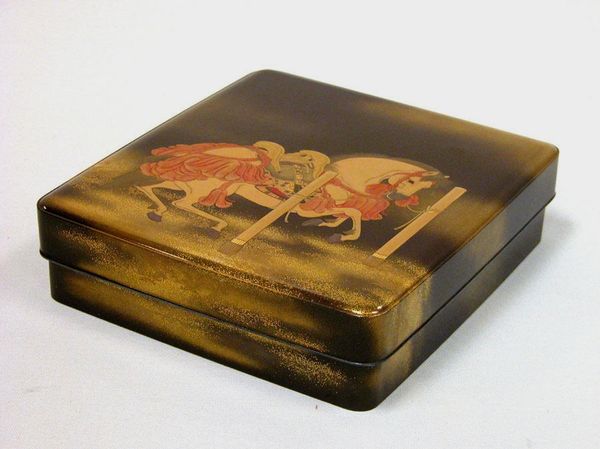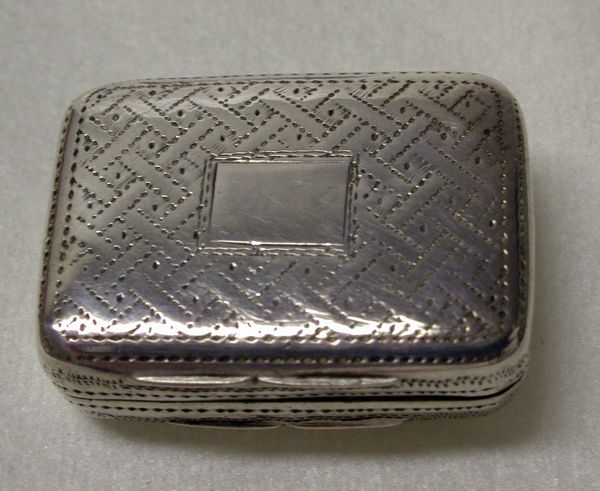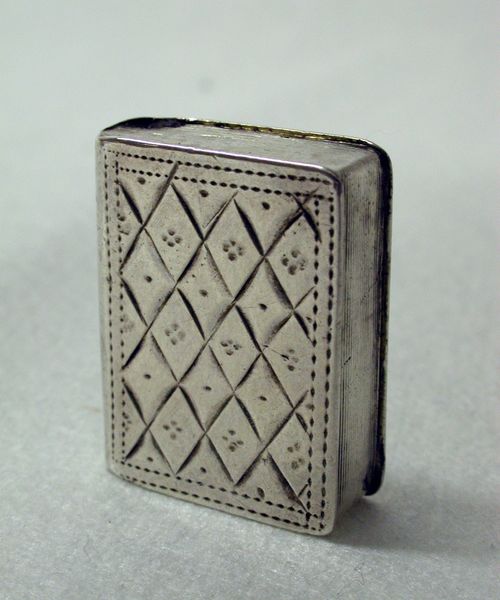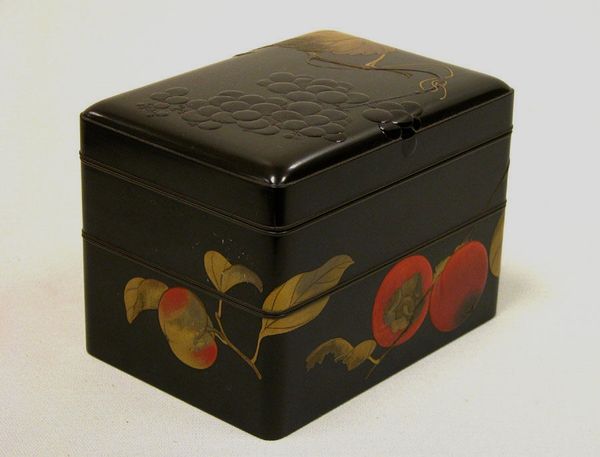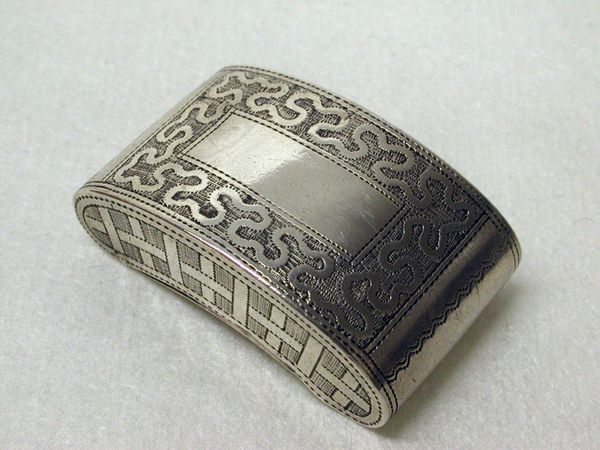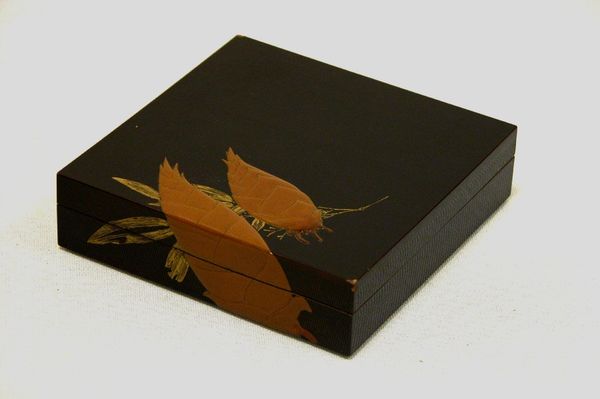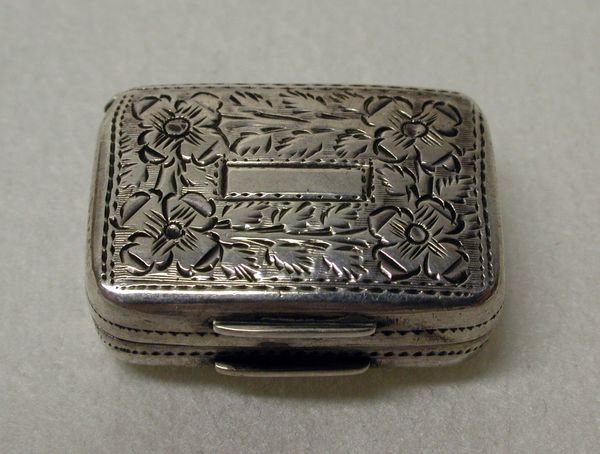
ceramic, wood
#
asian-art
#
ceramic
#
japan
#
form
#
geometric
#
orientalism
#
wood
#
decorative-art
#
miniature
Dimensions: H. 3/8 in. (1 cm); W. 1 1/2 in. (3.8 cm); L. 7 1/8 in. (18.1 cm)
Copyright: Public Domain
Curator: Here we have a box dating back to the 19th century from Japan, now residing here at the Met. It is believed to be made from wood, perhaps even ceramic elements, too, in a style evoking Orientalism. Editor: My immediate impression is one of refined simplicity, almost austere. The dark lacquer-like surface and the precise geometric forms inlaid with gold create a very restrained visual effect. It's quiet, isn't it? Curator: Quiet, perhaps, but consider the period. This object would likely have been made during a period of increasing western influence on Japanese culture. How did Japanese artists maintain traditions while also responding to globalization? Objects like this one can provide insight. Editor: That tension between tradition and external influence is definitely palpable. The miniature format speaks to a culture valuing delicacy, craftsmanship. How does this relate to art history, in terms of function and purpose? Was this a utilitarian object, or primarily decorative? Curator: Function and form intertwine. This 'box,' more precisely, is attributed to Shibata Zeshin, a pivotal figure in Japanese art of the period. His approach shows sophistication and innovation, he worked through complex and subtle techniques for this type of decorative art, bridging the aesthetic of Japanese art to an emerging modern world. The context shapes our understanding. Editor: Precisely! And if we shift the context, and analyze through contemporary intersectional lenses, the question of miniature itself raises more points. Whose space does it inhabit? Who would be in a position to create or afford it? Does it project power or invite contemplation? How did its materiality operate, and why does art have to function within existing power structure to be acknowledged in society? Curator: That's an important observation, focusing on that historical understanding helps to clarify our understanding of visual imagery and also address any modern concerns. We see the tension between how historical forms are displayed against the social backdrop that determines such arrangements. It’s quite intriguing how such an object offers a dialogue between different interpretations and values, even across the time. Editor: I agree completely, appreciating both its historical placement and the ability to make this relevant today can guide conversations beyond assumptions in modern artistic practice.
Comments
No comments
Be the first to comment and join the conversation on the ultimate creative platform.

